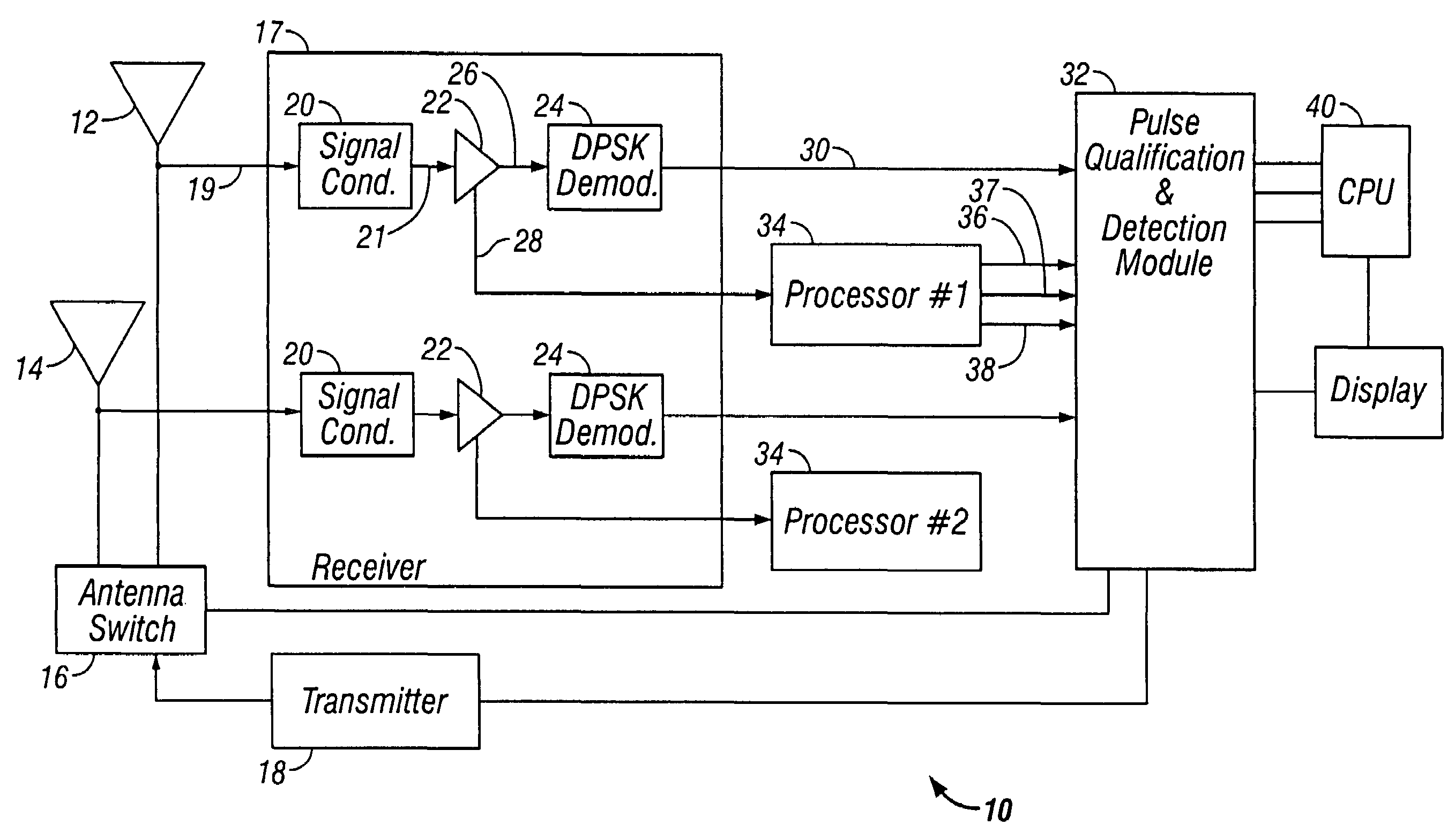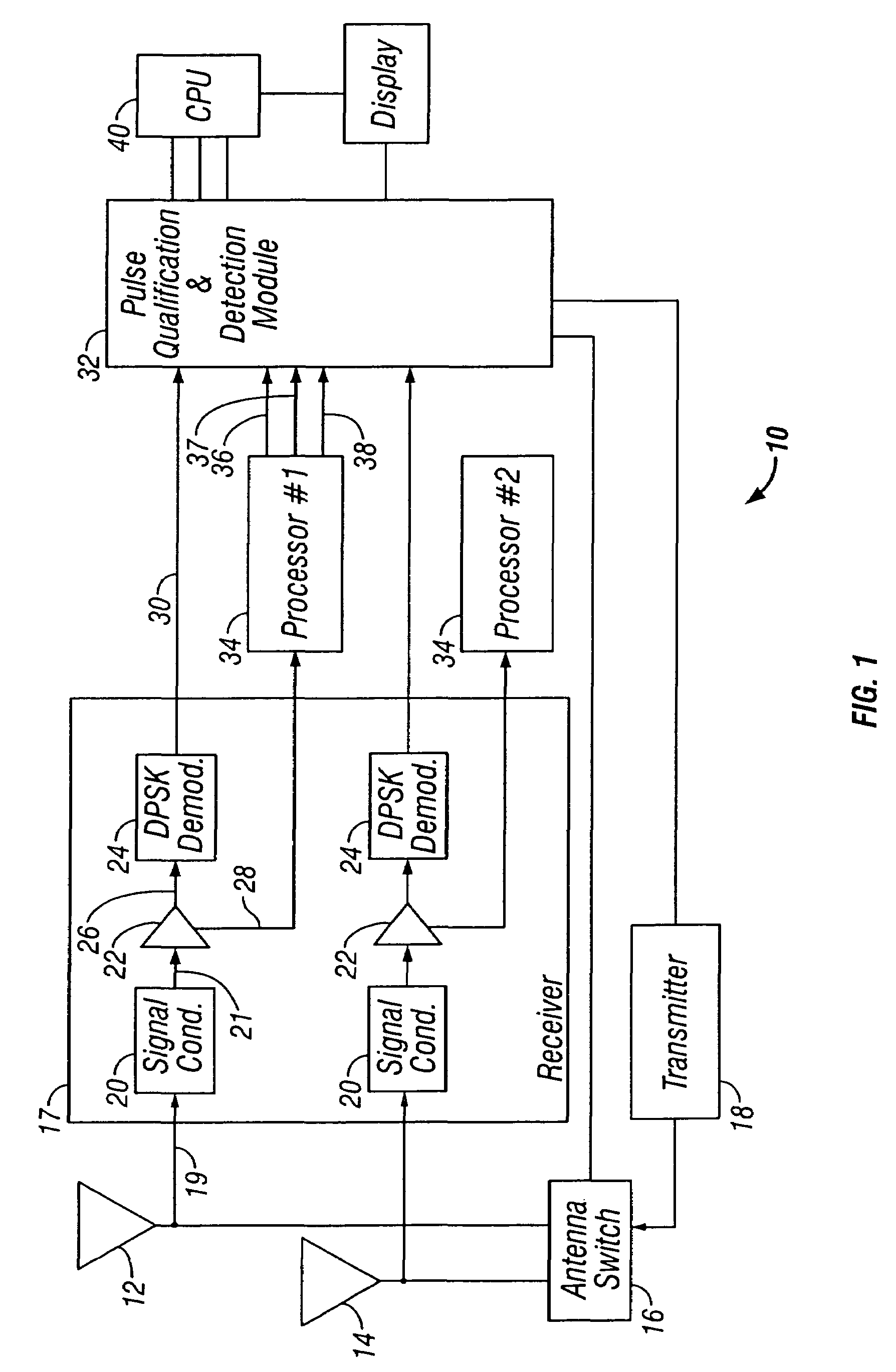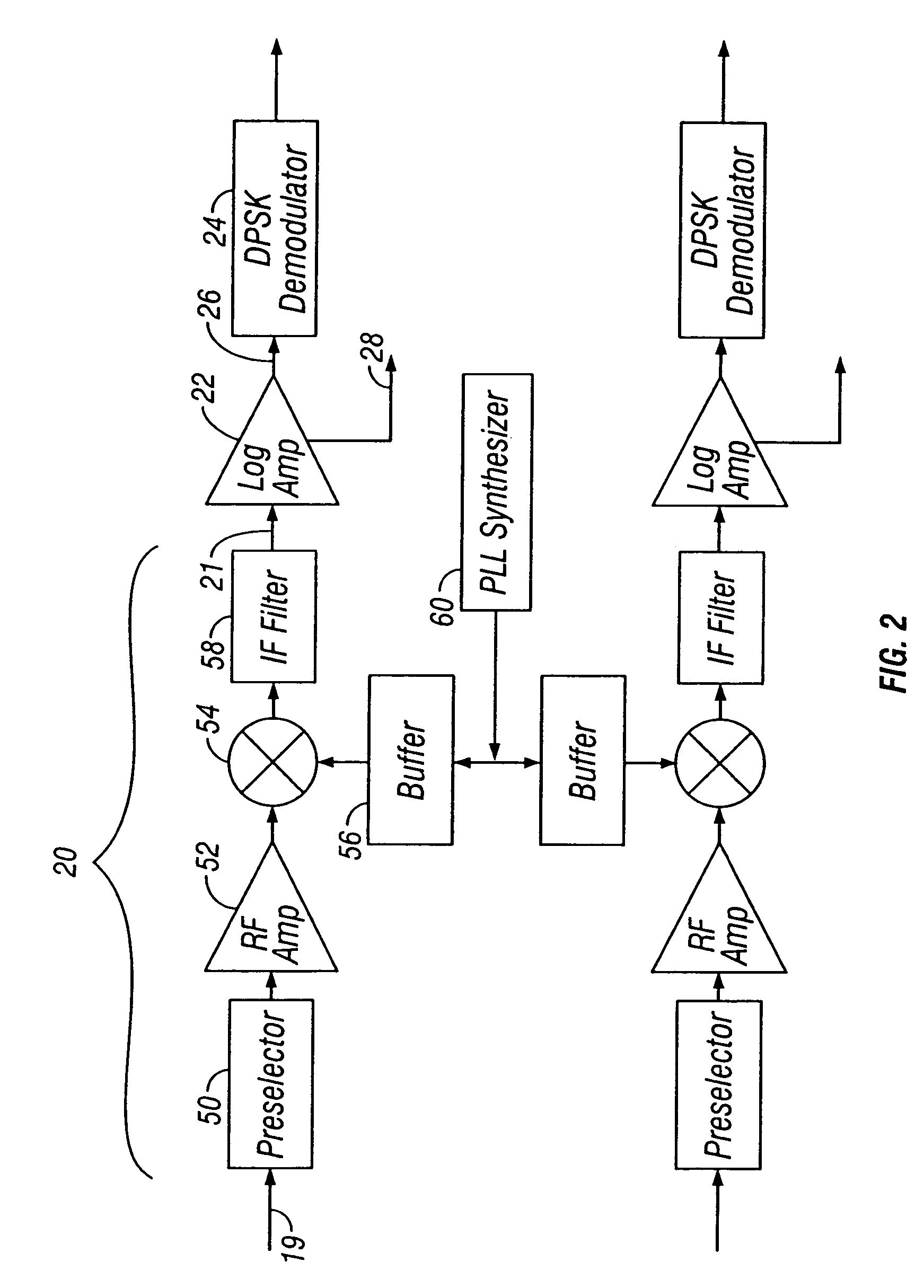Device and method for SPR detection in a Mode-S transponder
a transponder and mode technology, applied in the field of avionics electronics, can solve the problems of aircraft not being able to detect spr signals within the collective received signal, existing transponders have met certain limitations, and are not properly receivabl
- Summary
- Abstract
- Description
- Claims
- Application Information
AI Technical Summary
Benefits of technology
Problems solved by technology
Method used
Image
Examples
Embodiment Construction
[0032]FIG. 1 illustrates a block diagram of a Mode-S transponder 10 formed in accordance with an embodiment of the present invention. The transponder 10 represents a diversity transponder in that it may be connected to first and second antenna 12 and 14 located on the top and bottom sides of an aircraft. One of the top and bottom antenna 12 and 14 is selected for use based upon one or more of several criteria such as received signal strength and which signal was received first. An antenna switch 16 selects one of the top and bottom antenna 12 and 14 based upon these criteria. A transmitter 18 outputs signals to be transmitted from the selected one of the top and bottom antenna 12 and 14. The receiver 17 communicates with processors 34 and a pulse qualification and detection module 32.
[0033]The top and bottom antenna 12 and 14 are connected to identical parallel receive frequencies, only one of which is described below in detail. Received signals 19 from the top and bottom antenna 12...
PUM
 Login to View More
Login to View More Abstract
Description
Claims
Application Information
 Login to View More
Login to View More - R&D
- Intellectual Property
- Life Sciences
- Materials
- Tech Scout
- Unparalleled Data Quality
- Higher Quality Content
- 60% Fewer Hallucinations
Browse by: Latest US Patents, China's latest patents, Technical Efficacy Thesaurus, Application Domain, Technology Topic, Popular Technical Reports.
© 2025 PatSnap. All rights reserved.Legal|Privacy policy|Modern Slavery Act Transparency Statement|Sitemap|About US| Contact US: help@patsnap.com



